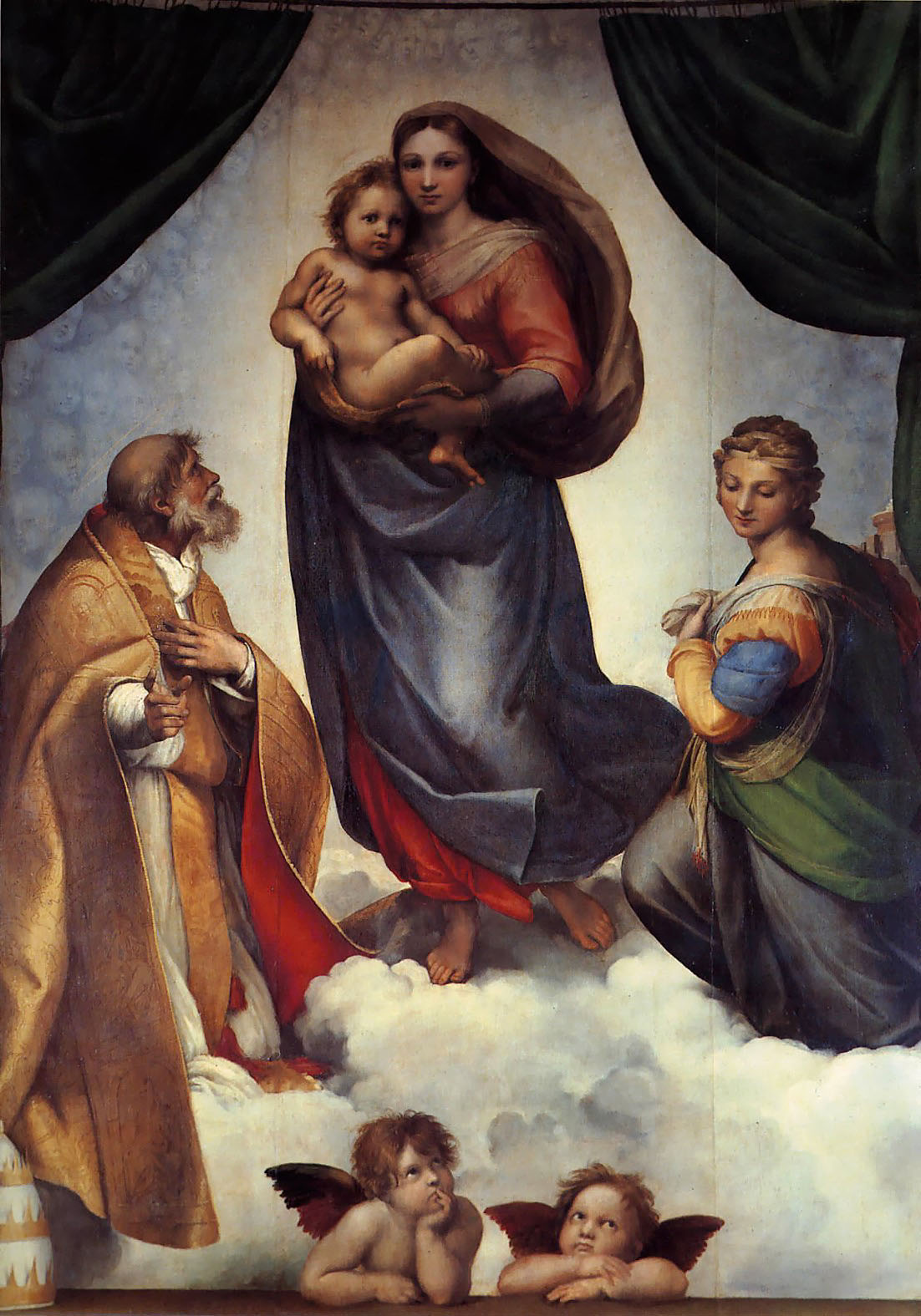The Sistine Madonna
Story
The canvas with the Virgin, Child and Saints Sixtus and Barbara, usually called the Sistine Madonna, is characterized by an imaginary space created by the figures themselves. The figures stand on a bed of clouds, framed by heavy curtains which open to either side. The Virgin actually appears to descend from a heavenly space, through the picture plane, out into the real space in which the painting is hung. The gesture of St Sixtus and the glance of St Barbara seem to be directed toward the faithful, whom we imagine beyond the balustrade at the bottom of the painting. The Papal tiara, which rests on top of this balustrade, act as a bridge between the real and pictorial space.
The painting was probably intended to decorate the tomb of Julius II, for the holy pope Sixtus was the patron saint of the Della Rovere family and St Barbara and the two winged 'genii' (visible at the bottom of the picture space) symbolize the funeral ceremony. The canvas was located in the convent of St Sixtus in Piacenza and was later donated by the monks to Augustus III, King of Saxony. It was carried to Moscow after the Second World War, and was later returned to Dresden.
Generations of visitors to the Gemäldegalerie in Dresden have been deeply impressed by the way in which Raphael portrayed the Madonna in this painting. It has been reproduced over and over again, and almost everyone is familiar with the putti leaning on the balustrade. The Madonna appears from behind a curtain, confident and yet hesitant. The curtain gives the illusion of hiding her figure from the eyes of the onlooker and at the same time of being able to protect Raphael's painting.
